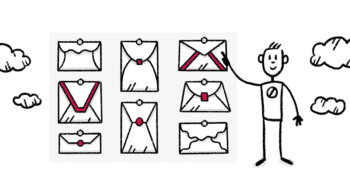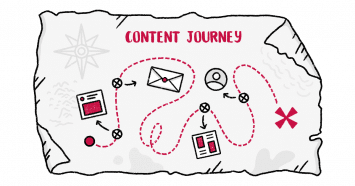SaaS companies should buy blogs & newsletters – Here’s how to do it!

SaaS companies acquire other businesses every day.
Sometimes it’s a direct competitor, sometimes it’s an expansion play to enter an adjacent space quickly, and sometimes, it’s a player in another geographical market they want to join.
The more a SaaS company grows and has cash available, the more acquisitions are a great way to boost SaaS growth quickly.
Historically though, it’s still pretty rare to see a SaaS business buy a blog or a media company.
It’s a shame. I personally think acquiring a blog or a Newsletter is a fantastic strategy. It can deliver value exceptionally fast without the headaches of integrating different technologies, products, and company cultures, which is often commonplace and stressful when acquiring another software company.
Today I’d like to zero in and analyze why your company should buy a blog and how.
Top companies are starting to acquire blogs and media companies.
The market is beginning to realize the untapped opportunities of buying blogs, and in the last year, we’ve seen at least two major acquisitions.
I bet this is just the beginning of a trend. In the next few years, I’m sure we’ll see a lot of SaaS companies buy a blog to scale faster.
I’ll tell you why it makes a lot of sense and my personal experience in a bit, but first, let’s check these two recent acquisitions.
Hubspot acquired The Hustle.

It’s not strictly a blog, but for sure, it’s a media company. The Hustle is a Startup focused newsletter that has enjoyed exponential growth since the get-go. In just a few years, they reached 1.5 million subscribers.
That’s huge if you think about it. It’s a niche market, and there was no website pushing the newsletter, so most of the growth happened organically.
Hubspot itself explains the ratio for the acquisition in their press release:
For many customers, their first introduction to HubSpot is through our educational blog, Academy, and YouTube content, not our software. More recently, our customers have started to seek out news and trends-based content across new forms of media like podcasts, newsletters, and research
Kieran Flanagan, SVP of Marketing at Hubspot
It makes perfect sense. Hubspot has a lot of money and a vast audience. When you reach that size, growth slows down and becomes more expensive.
Why not deploy the capital to immediately bump your reach among potential customers and gain a considerable archive of high-quality content?
The Hustle’s audience is a perfect fit for Hubspot as they sell a lot in the startup space.
SemRush acquired Backlinko
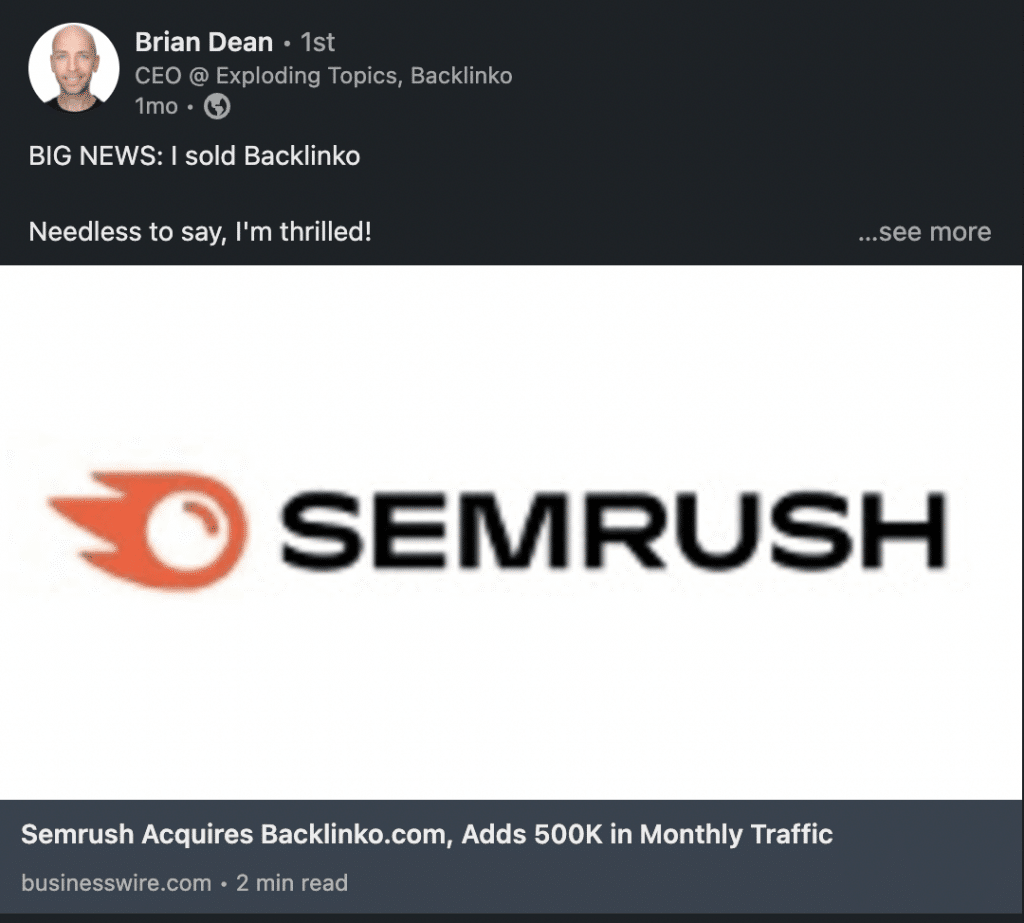
This one is pretty recent, even announced just a few days ago, and it took the SEO world by storm.
Backlinko, Brian Dean’s website, is one of the world’s most well-known and respected SEO blogs. This guy coined the term “Skyscraper technique” and mastered writing fewer pieces of content but focused on the content’s quality and promotion.

It’s funny that the first quote on Backlinko’s homepage is by Hubspot’s SVP, who happened to handle “The Hustle” acquisition. I wonder if Brian checked with Hubspot to see if they might be interested in acquiring him.
Backlinko has around half a million visitors per month, an impressive number. They’re all SEO experts, and SemRush will be able to monetize that audience very easily.
But there’s more in this acquisition than traffic, and Brian has produced many high-quality SEO courses.
I always stress that education is a critical element of a SaaS’s success. SemRush is not only bumping its traffic by 500,000 visitors per month, but they’re also acquiring a trove of really high-quality content they’ll be able to package together with their software, ultimately making the product more appealing.
Finally, this is a great defensive move. Brian Dean has a massive influence in the SEO space. What if he started pushing people to use Ahrefs (SemRush’s main competitor)? With this acquisition, SemRush is linking its brand to one of the top influencers in the space.
The list is growing daily
These two are maybe the most notable acquisitions in the marketing space but the list is way longer.
Stripe has acquired Indihackers, a knowledge-sharing community.
Robinhood acquired MarketSnack to deliver financial news to its customers.
Zapier’s first acquisition was Makerpad, a no-code education service, and community.
(Hat tip to Antonio Bellu who pointed me to these acquisitions on Linkedin!)
For sure more acquisitions went below the radar.!
Why should SaaS companies buy a blog?
I’m focusing on SaaS companies because that’s the industry I know best. Everything in this post still applies to most businesses, though, and there’s no reason why an e-commerce business should not acquire a blog as well.
Ok, Let’s break down the advantages that buying blogs can bring to your business, shall we?
Traffic
Of course, when you acquire the blog, the most valuable asset is the traffic, or even better, the audience that you can reach through your new media property.
The real deal here is that you can get value from it right after signing the legal paper. When you acquire a more significant business, like another company, the time to value is very long. You need to integrate the products, the billing, the teams.
Depending on the company’s size, it’s a process that can take months or years. When we sold AdEspresso to Hootsuite, it took more than two years before we started releasing pieces of AdEspresso within the main Hootsuite product.
On the other hand, you can add banners and callouts to your products and move the lead generation to your CRM in days when you buy a blog.
Mailing List
A large blog usually comes with an extensive mailing list, and that’s another terrific asset.
When we sold AdEspresso, we immediately let everyone on our mailing list and Hootsuite’s mailing list know the day after we announced the acquisition. Just that announcement generated a meaningful amount of cross-sales on both sides.
Mailing lists are becoming an acquisition target even without a blog.
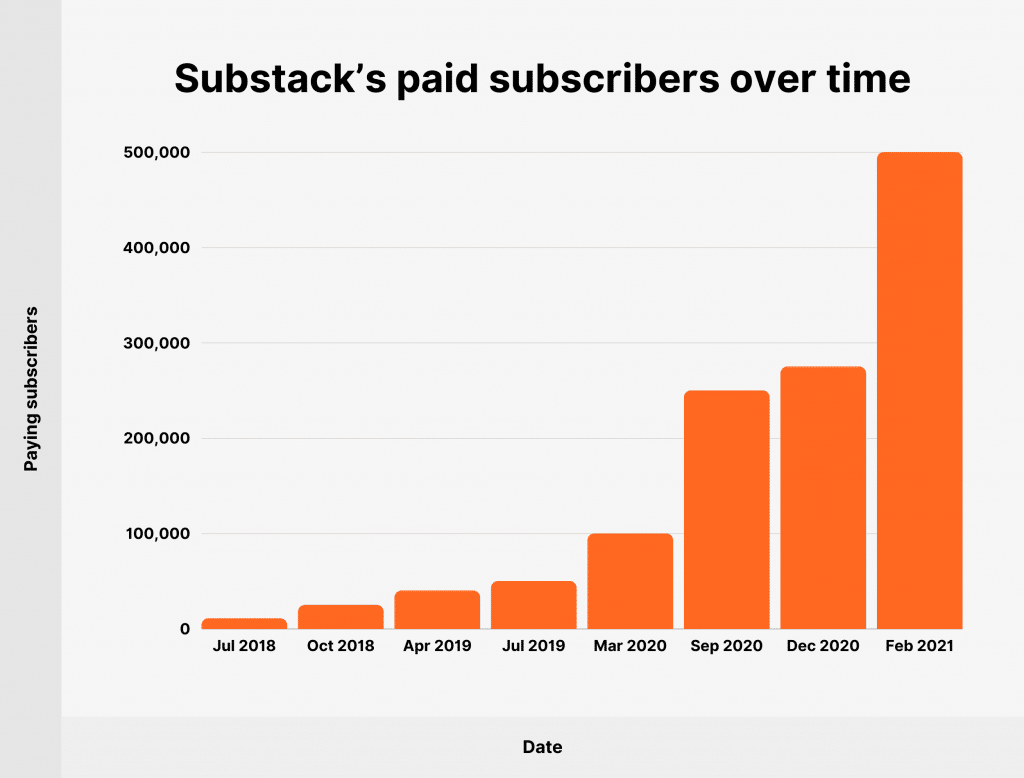
With the terrific success of Substack, which made newsletters cool again, I see more and more transactions that only involve a mailing list.
The Hustle is the perfect example.
SEO Benefits
On top of the newly acquired traffic, online businesses that bought a blog will also get a few relevant SEO benefits.
First of all, you can start improving cross-linking between the two properties and, based on your strategy, increase both sites’ SEO or use the acquired one to boost your corporate website.
If you don’t want to maintain the acquired website, you could also move over its content on your main website and 301 redirect all its pages to your leading site. You’ll likely lose some of its traffic, but overall you’ll increase your primary website authority and get a big bump up on your main property.
This option makes more sense regarding conversion rates (your main website converts better) and brand identity. But keeping both websites alive has another tremendous advantage most people don’t think about.
Google usually only ranks one page per domain for each keyword, and you could rank both of them on the first page for your most relevant keywords by owning two blogs.
That’s precisely the strategy Hootsuite went after when they acquired AdEspresso: keeping both websites up so they could get more real estate on Google’s first page and capture a larger share of the traffic. Here’s an example:
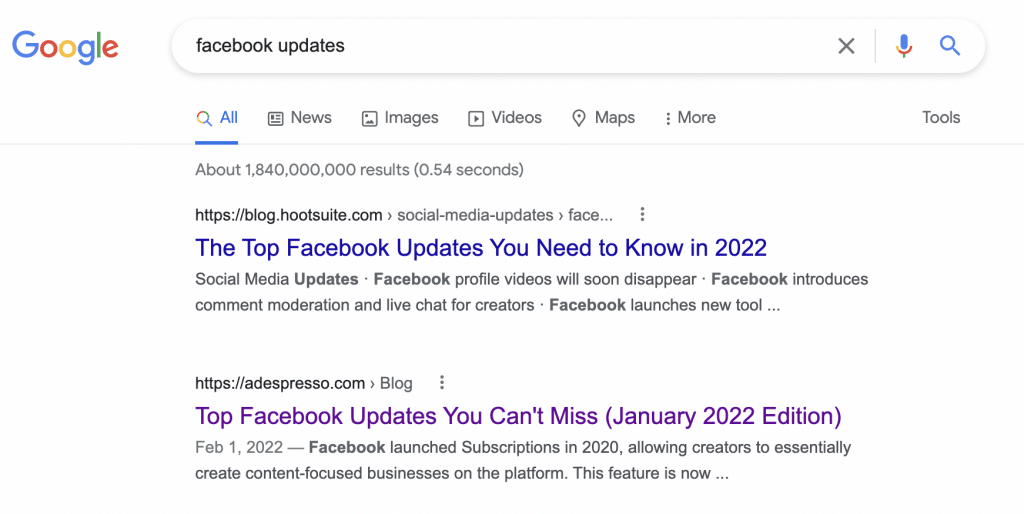
If you look for “Facebook Updates,” it doesn’t matter if you check the first post or the second; you’ll land on a Hootsuite property either way.
This strategy creates more opportunities to capture potential customers’ interest by providing different angles on a topic.
It doubles your opportunities to fire a retargeting pixel on users searching specific keywords.
Doubles your lead generation chances with different lead magnets and strategies
And most of all, it makes life harder for your competitors. They’ll have to fight for first-page real estate with two websites rather than one.
Content Catalog
The last advantage of the list is the content catalog you’re acquiring.
It’s often undervalued but incredibly powerful. In the end, think about companies like Netflix, Hulu, etc. Where are they spending most of their money? In producing or acquiring content!
It’s not just traffic or SEO, and content has value by itself.
Let’s go back to SEMRush’s acquisition of Backlinko. Sure they got traffic, but what’s more valuable is that they now own some of the best educational content on the web around SEO. Plus all of Brian’s paid courses.
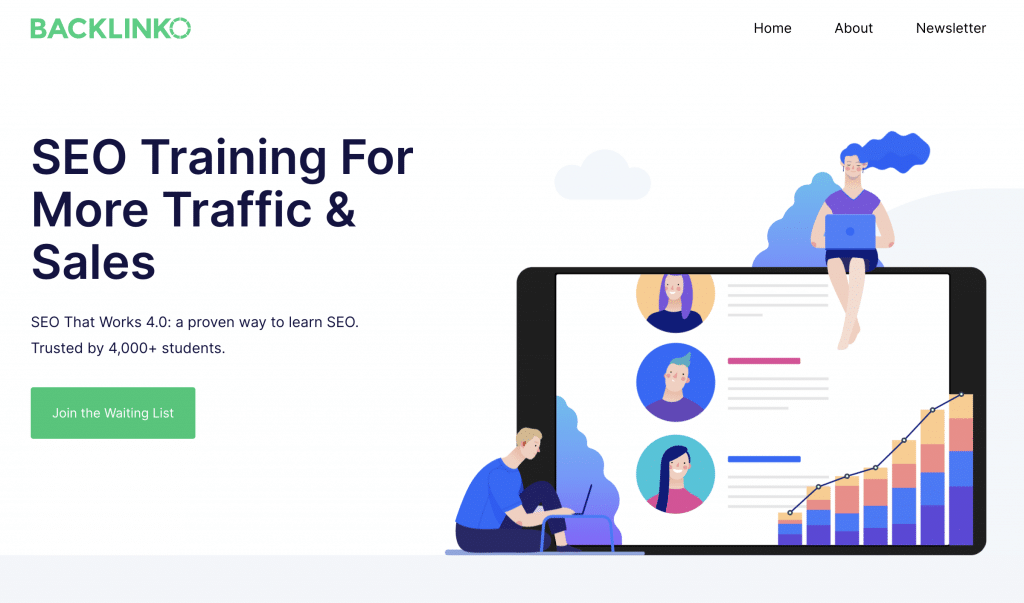
They could quickly turn them into free assets only for paying customers and create a tremendous competitive advantage for their product, likely increasing conversion rates and retention by paying off the acquisition cost quickly.
It would take forever and be extremely expensive to create all the content they acquired from scratch.
It’s party time across the whole funnel.
Acquiring a media company can have a significant impact across all your marketing and sales funnel!
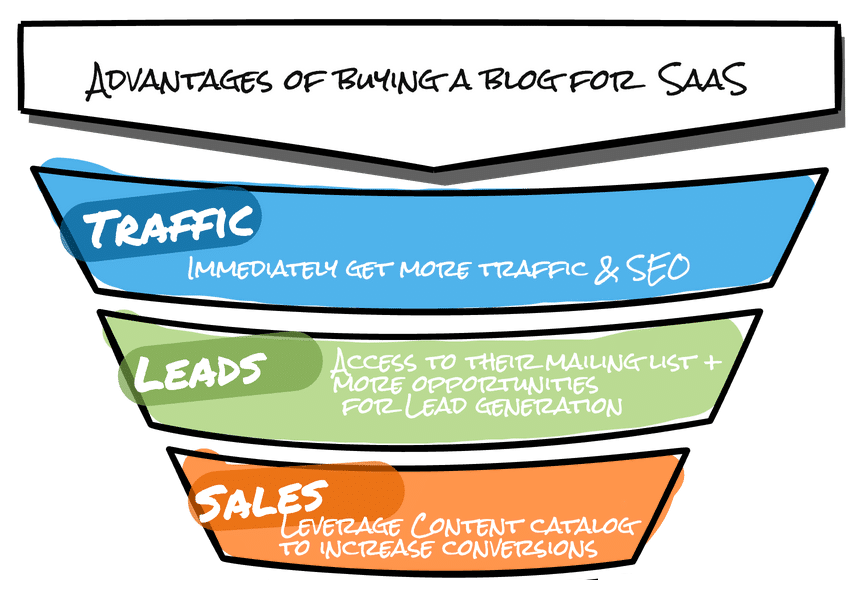
Let’s recap:
- You immediately get a significant traffic bump to increase your reach and the top of the funnel. You also get a lot of SEO stamina to boost your main blog. All of this while making your competitors’ life harder.
- You get access to their mailing list for the middle of the funnel. Just by announcing the acquisition and offering their audience a special promo, you’ll get a big bump in sales.
- The content catalog can be repurposed across new channels and bundled within your product to increase retention and differentiation over competitors.
How to find the right blog to buy
Buying a media company, whether it’s a blog, a podcast, a youtube channel, or a newsletter, is something every SaaS company can do.
Of course, you’ll need to adjust your expectations based on your budget. Some properties can come as cheap as a few thousand dollars, and others are in the million dollars range.
The outcome will be very different; nonetheless, even small acquisitions can positively impact your business.
Small properties usually have limited traffic and mailing list size, and you typically acquire them for SEO benefits. However, you might be lucky enough to spot some rough diamonds with a valuable content catalog that didn’t get the attention it deserved or very niche websites with a small but extremely loyal audience.
More extensive acquisitions usually come with the whole package: Large audience, website traffic, strong social presence, large mailing list, and SEO footprint. If they are substantial acquisitions, they might even come with organized events.
So, where should you look for an acquisition target?
Flippa

Flippa is the largest destination to sell and buy online businesses. They started with just content websites and blogs, but nowadays, you can also purchase e-commerce stores, agencies, and SaaS tools.
It’s very intuitive, and you can filter by business type, age, traffic, revenues, and more.

Most of the websites also have certified Google analytics data which provides you a certain level of trust.
Personally, I’ve never found anything useful for my SaaS companies in Flippa, even though I regularly check what’s on sale at least once per month.
The main problem from a startup’s point of view is that most of these websites focus on affiliate marketing which creates 3 issues for me:
- They tend to be a bit shady/aggressive in how they do SEO and traffic acquisition
- They usually don’t have a loyal audience
- They have revenue that I don’t care about but drive the price up
However, what I love the most about Flippa is how granular their search filters are.
I usually search for blogs with no revenue, at least two years old with a DR of at least 50 and 5,000 visitors per month.
Google, SEO Tools, and Social Media
Organic searches are my favorite way to spot potential acquisition targets.
For large acquisitions, usually, you don’t need much research. They are the websites you are probably reading daily to keep up to speed with your industry.
We didn’t need any research when looking for media acquisitions at AdEspresso. Social Media Examiner and Social Media Today were the obvious targets from the get-go. Unluckily both of them were too expensive.
For smaller acquisitions, some research can be helpful.
Social Media can be beneficial if you have an extensive network in your industry. The tactic is simple: ask or look for someone with a larger audience who has already asked.
Of course, you don’t need to ask what you should buy explicitly. Just ask what their favorite blogs or newsletters are.

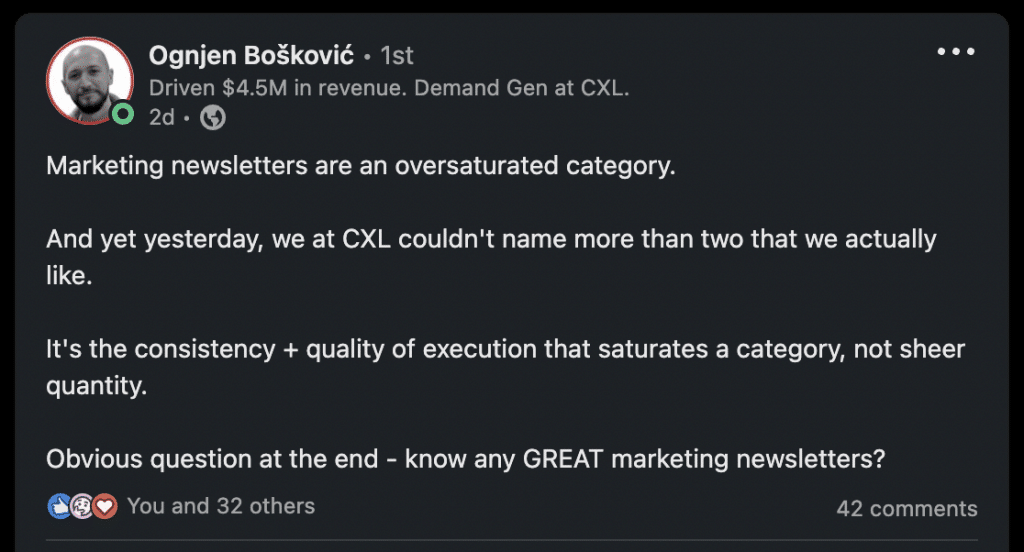
Every time I find a thread like this, I save it for future reference. You never know!
If social media are of no use, then you can move to Google, searching websites that often appear in your target keywords and are primary content websites, not competitors or consulting agencies.
If you use Ahrefs or SEMRush, you can usually find them quickly with just one click.
SEMRush has a very clear overview of websites competing for the same keywords as your website:
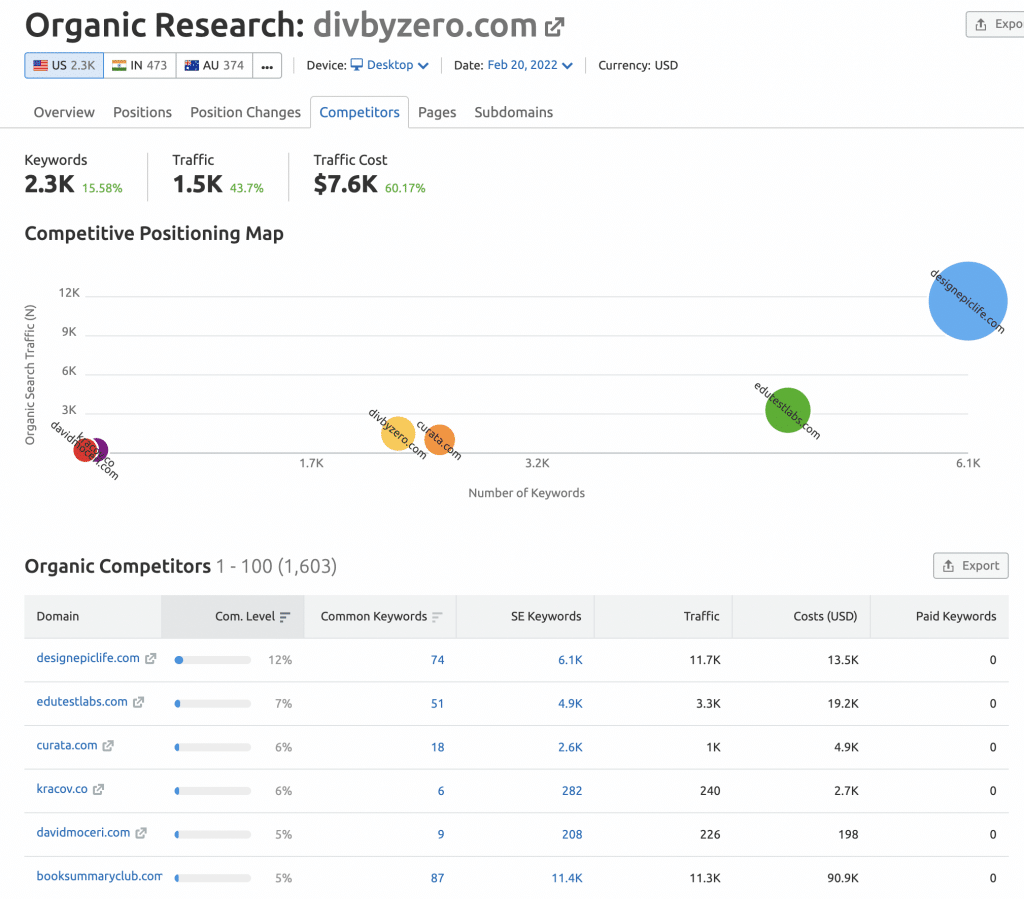
Ahrefs has a similar view:
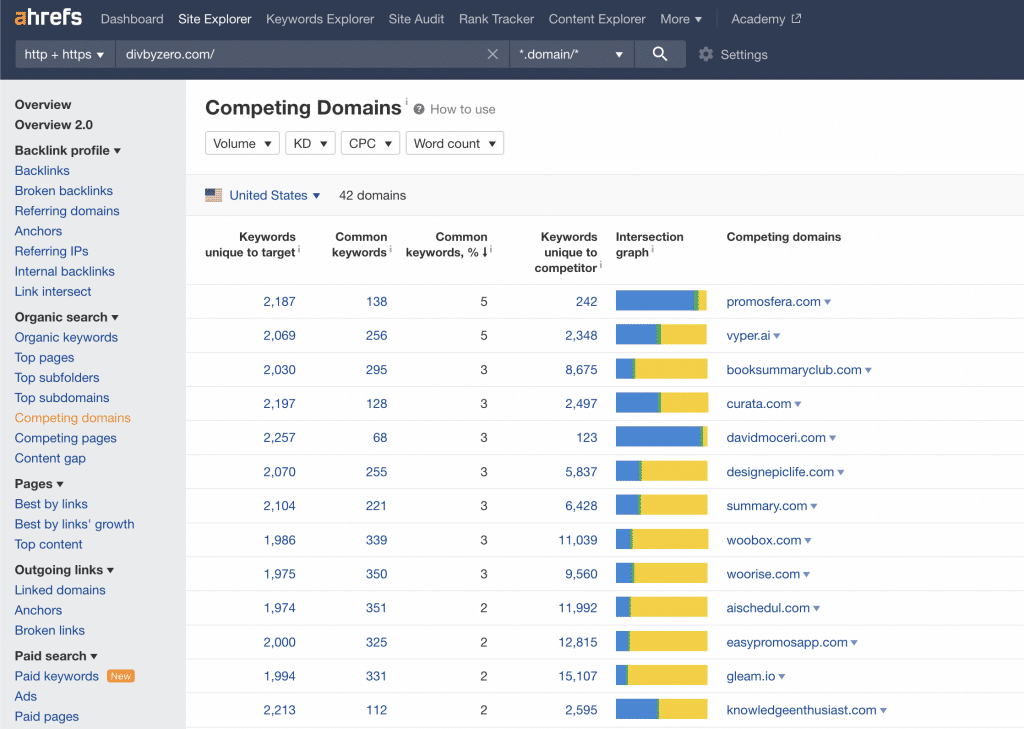
I usually export these tables, put them in a Google Sheet, and then go through them one by one, taking notes of which one looks interesting.
Here’s what I note down for the first pass:
- The number of pages: Useful to understand how extensive the content catalog is.
- Date of the last content published: You can usually get a bargain on websites that are no longer updated, and they’re more likely to be sold.
- Domain Rank: It’s a quick indicator to understand the number of backlinks
- Estimated organic traffic: Well… I want them to have traffic!
- Top 5 keywords bringing traffic to the website: Useful to understand the kind of audience it’s attracting. I passed a couple of deals because 90% of the traffic was generated by just two keywords that were not relevant to me.
From here, if I find something interesting, I use Clearbit or Hunter.io or simply even Linkedin to get ahold of the owner and understand if he’s interested in selling.
Final checks before buying a blog
Once you’ve agreed with the seller, there are two possible scenarios:
- It’s a meaningful acquisition, and a lawyer will jump in.
- You’ll close the deal by yourself.
If you’re purchasing a media property for a SaaS business, I would always recommend having lawyers draft a simple contract to be sure all the intellectual properties are transferred to you.
If you’re purchasing for yourself, you’re probably good to go with a simple template.
Either way, there are some things worth checking before finalizing the acquisition:
Site Age
It’s not the strongest signal, but I tend not to buy websites created very recently.
Recent websites with a lot of traffic are always a red flag. It might be fake and generated with some black hat tactics that will hunt you in the long term.
You can use a Whois tool to see when the domain was registered.
Site history
Wayback machine is such a fantastic tool!
It lets you check what a website looked like weeks or years ago.
It’s always good to see the history of a website before purchasing it. Domains can be sold off multiple times, and often they’re abused to create shady casinos or adult content sites.
Here’s my website on August 2018:
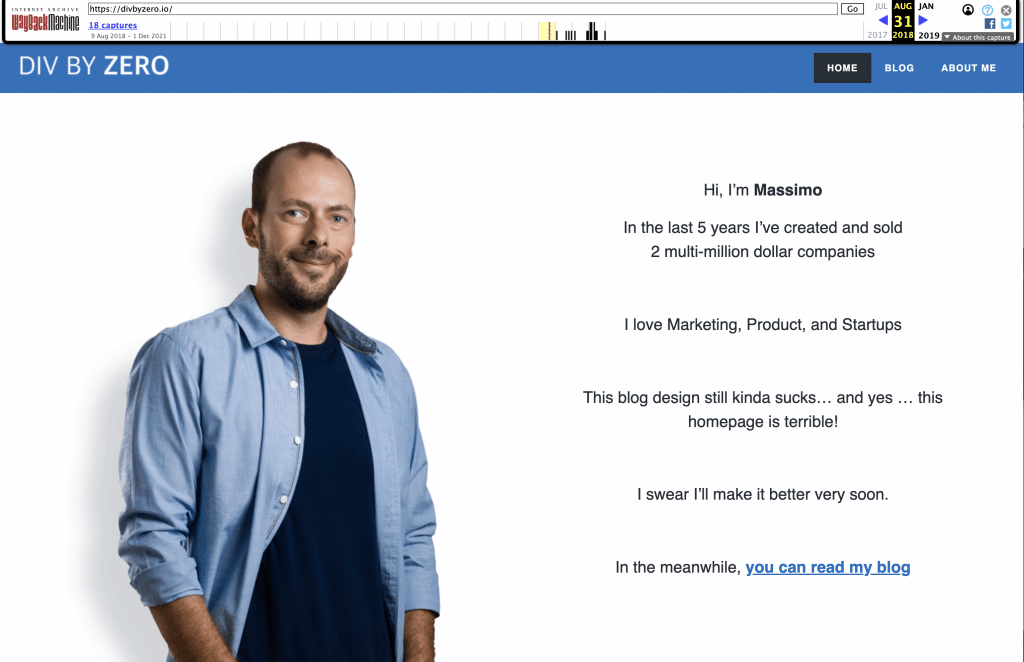
No matter how good a website is today, you don’t want to buy something that had adult content in the past unless it was a very long time ago.
Backlink Profile
Once you’ve seen that a website has a high Domain Rank, it’s time to dig deeper and see what kind of websites contribute to its Domain rank.
Most SEO tools have a feature to check all the backlinks for a domain. SEMRush even has a convenient backlink audit tool that automatically identifies potentially toxic backlinks:

But it’s not just a matter of toxic backlinks; you should try to scroll through all the backlinks looking for quickly:
- Niche or topic of the websites linking: many backlinks from websites in a completely different niche can result in a high but useless DR.
- Regional backlinks: If you’re marketing your product in the United States, you want to buy a website with backlinks from around the world. If 90% of the links are from India, Italy, or any other country, they’re less relevant unless you enter those markets.
- Too many links from the same website/network: If the seller operates many different websites, the blog you’re acquiring might rank because of all the links from the seller network. Of course, they might disappear after you buy them.
Google Analytics
This is an easy one.
Don’t trust screenshots or unknown analytics tools. Before you buy, ask the seller to give you view permission over their Google Analytics data so you can check yourself that the numbers are genuine.
It’s also a great way to understand better the kind of traffic the website is attracting and its most substantial pieces of content.
I want to see here a somehow even distribution of traffic across pages.
Of course, there will always be outliers, pages that receive 10x more traffic than others. That’s fine as long as there’s no single page that gets 90% of the traffic and 90% of the pages generating 0 hits monthly.
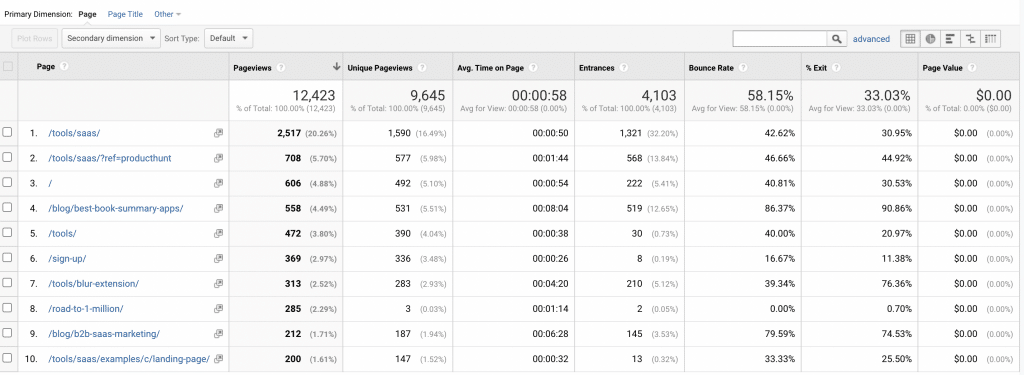
Payment through escrow
The final piece before executing the acquisition is defining how the payment will be completed to protect both parties.
Unless the seller is someone you know and trust, you want to avoid the risk of executing the payment before getting ownership of the website and the other way around for the seller.
The easiest solution is to use escrow services. A third party will receive the money and guarantee the seller they are available for him. Then once the buyer confirms he acquired ownership of the website, they’ll unlock the funds.
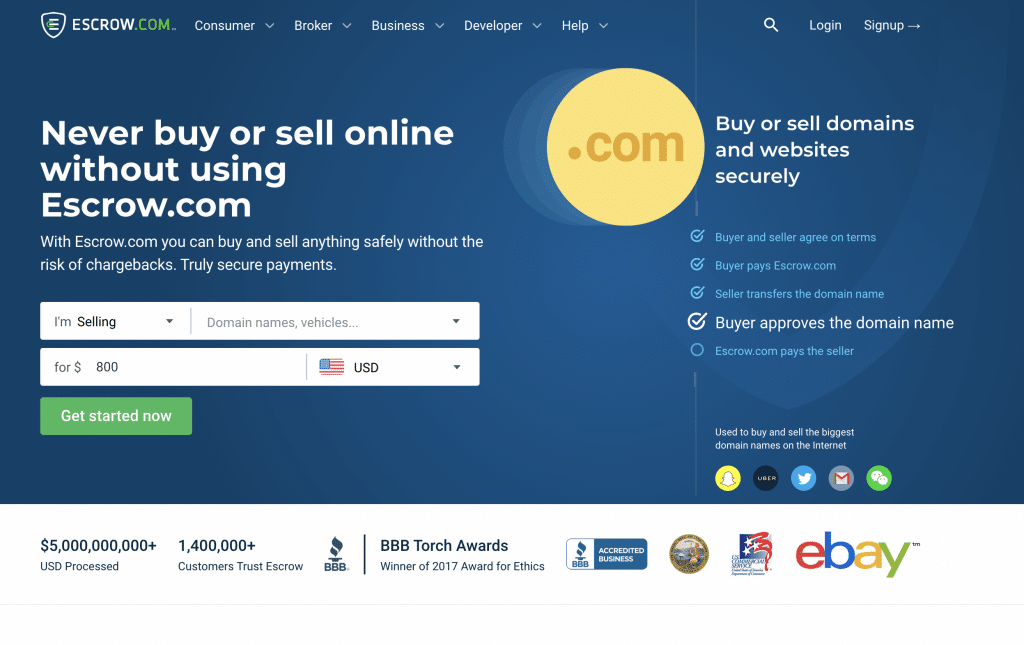
Escrow.com is the most reputable service in the category, and even giants like eBay use its services.
If you’re buying through a marketplace like Flippa, they often already provide an escrow service.
Ready to buy a blog to grow your SaaS?
As you might have hinted, I’m a big fan of SaaS companies acquiring media outlets to accelerate growth.
It’s usually a very effective way to deploy capital that pays back the investment very quickly and with little uncertainty or risk.
On the other side, acquiring other SaaS tools is often very complex and has a lot of uncertainty and complexity, especially when integrating the two technologies.
Rest assured that we’ll see more and more of these operations in the next few years.
Have you ever bought a website? How was your experience and decisional framework? Let me know in the comments below!
